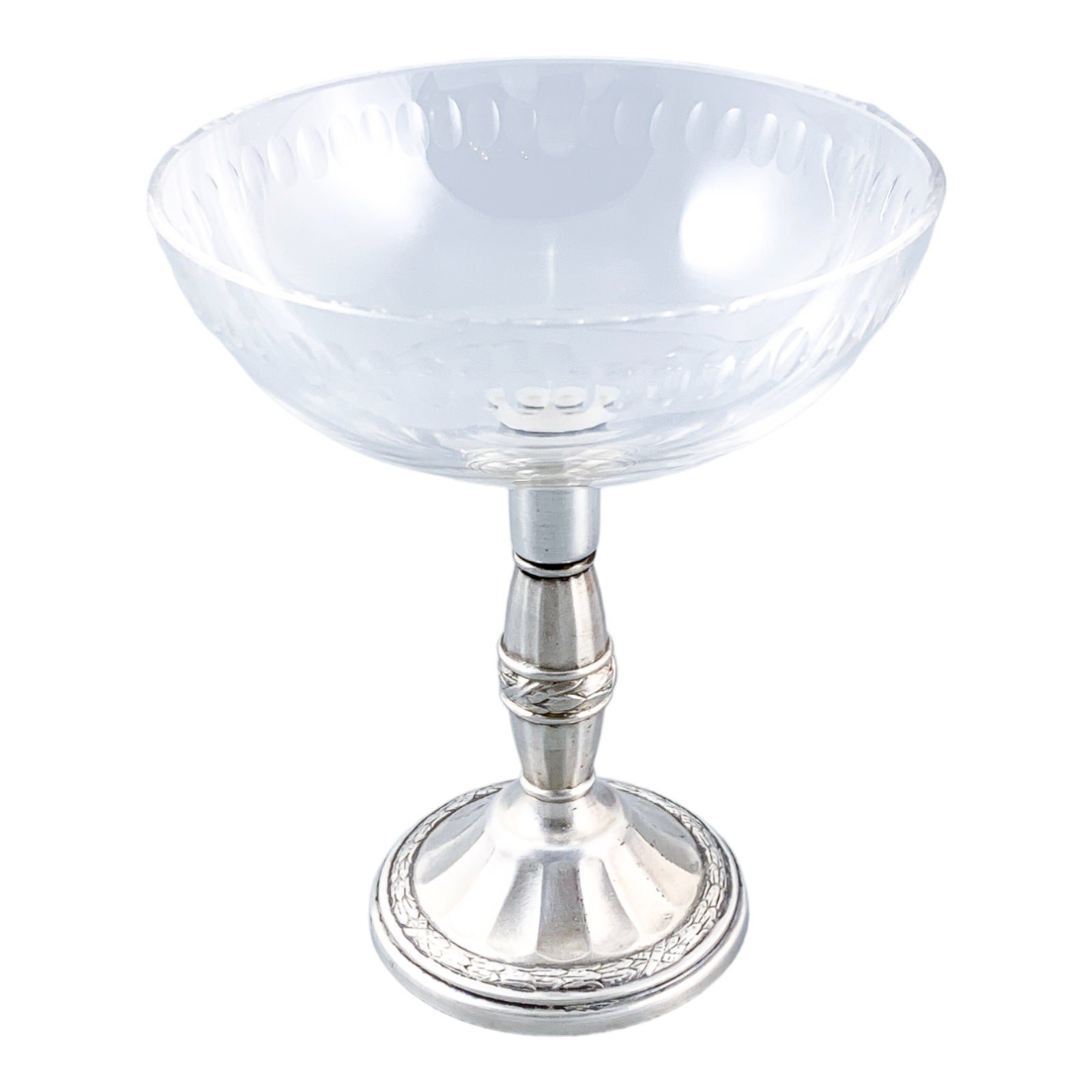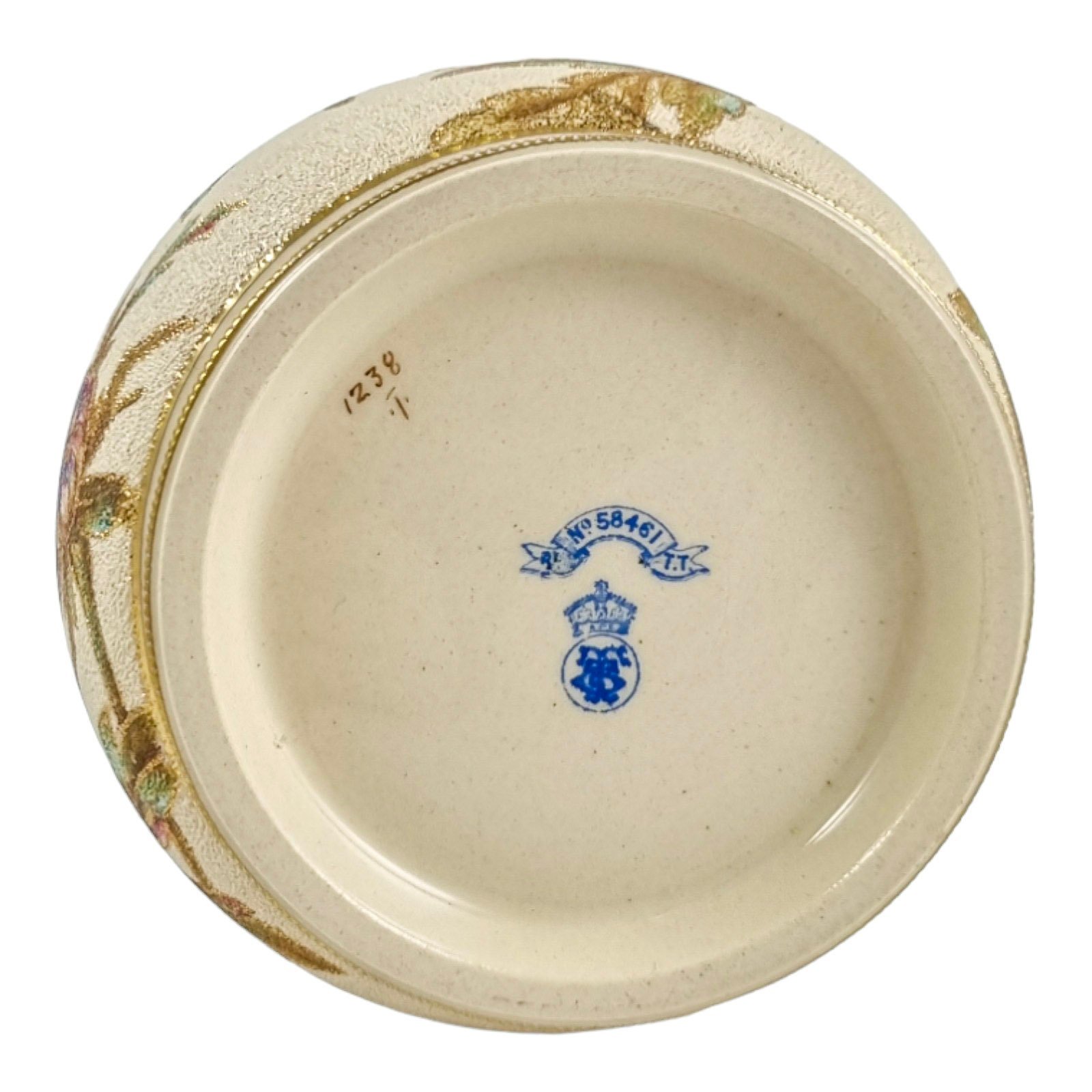 Image 1 of 11
Image 1 of 11

 Image 2 of 11
Image 2 of 11

 Image 3 of 11
Image 3 of 11

 Image 4 of 11
Image 4 of 11

 Image 5 of 11
Image 5 of 11

 Image 6 of 11
Image 6 of 11

 Image 7 of 11
Image 7 of 11

 Image 8 of 11
Image 8 of 11

 Image 9 of 11
Image 9 of 11

 Image 10 of 11
Image 10 of 11

 Image 11 of 11
Image 11 of 11












Rare Mason’s Ironstone sauce tureen, "Oyster Pattern" with turquoise base, hand-painted Regency period, circa 1815–1825
This rare Mason’s Ironstone sauce tureen, dating from around 1815 to 1825, is an exceptional example of early 19th-century English ceramic design. Decorated in the vibrant "Oyster" pattern, the piece features hand-painted peonies and stylised foliage in rich iron red, deep cobalt blue, and highlighted with delicate gilding. The design is set against a crisp white ground, contrasted elegantly by a turquoise-glazed footed base.
The tureen is finished with moulded cobalt and gilt side handles and a scroll-moulded finial atop the lid. The bold colour palette, Imari-inspired motifs, and carefully applied enamelling reflect the high standard of Mason’s early Regency production.
This piece would make a striking addition to a collection of English Ironstone, Regency ceramics, or period tableware. It also serves beautifully as a decorative feature for a dresser, sideboard, or country house kitchen display.
Weight: 795 g
Height (to finial): 13.5 cm / 5.31″
Height (to rim): 7 cm / 2.76″
Base dimensions: 13.5 cm × 8.5 cm / 5.31″ × 3.35″
Good antique condition. Hairline cracks are present on the base and near the handles, consistent with age and use. The colours remain vibrant, and the hand-painted decoration is crisp and well preserved. Displays beautifully and remains highly decorative.
This rare Mason’s Ironstone sauce tureen, dating from around 1815 to 1825, is an exceptional example of early 19th-century English ceramic design. Decorated in the vibrant "Oyster" pattern, the piece features hand-painted peonies and stylised foliage in rich iron red, deep cobalt blue, and highlighted with delicate gilding. The design is set against a crisp white ground, contrasted elegantly by a turquoise-glazed footed base.
The tureen is finished with moulded cobalt and gilt side handles and a scroll-moulded finial atop the lid. The bold colour palette, Imari-inspired motifs, and carefully applied enamelling reflect the high standard of Mason’s early Regency production.
This piece would make a striking addition to a collection of English Ironstone, Regency ceramics, or period tableware. It also serves beautifully as a decorative feature for a dresser, sideboard, or country house kitchen display.
Weight: 795 g
Height (to finial): 13.5 cm / 5.31″
Height (to rim): 7 cm / 2.76″
Base dimensions: 13.5 cm × 8.5 cm / 5.31″ × 3.35″
Good antique condition. Hairline cracks are present on the base and near the handles, consistent with age and use. The colours remain vibrant, and the hand-painted decoration is crisp and well preserved. Displays beautifully and remains highly decorative.
This rare Mason’s Ironstone sauce tureen, dating from around 1815 to 1825, is an exceptional example of early 19th-century English ceramic design. Decorated in the vibrant "Oyster" pattern, the piece features hand-painted peonies and stylised foliage in rich iron red, deep cobalt blue, and highlighted with delicate gilding. The design is set against a crisp white ground, contrasted elegantly by a turquoise-glazed footed base.
The tureen is finished with moulded cobalt and gilt side handles and a scroll-moulded finial atop the lid. The bold colour palette, Imari-inspired motifs, and carefully applied enamelling reflect the high standard of Mason’s early Regency production.
This piece would make a striking addition to a collection of English Ironstone, Regency ceramics, or period tableware. It also serves beautifully as a decorative feature for a dresser, sideboard, or country house kitchen display.
Weight: 795 g
Height (to finial): 13.5 cm / 5.31″
Height (to rim): 7 cm / 2.76″
Base dimensions: 13.5 cm × 8.5 cm / 5.31″ × 3.35″
Good antique condition. Hairline cracks are present on the base and near the handles, consistent with age and use. The colours remain vibrant, and the hand-painted decoration is crisp and well preserved. Displays beautifully and remains highly decorative.
Mason’s Ironstone was first developed by Charles James Mason, who patented the durable ceramic formula in 1813. Combining the strength of stoneware with the appearance of porcelain, Mason’s Ironstone became widely admired for its rich Imari-style decoration, vivid enamels, and robust forms. Early Mason’s pieces, particularly those with vibrant hand-painted patterns like the Oyster design, are highly sought after by collectors today.





























